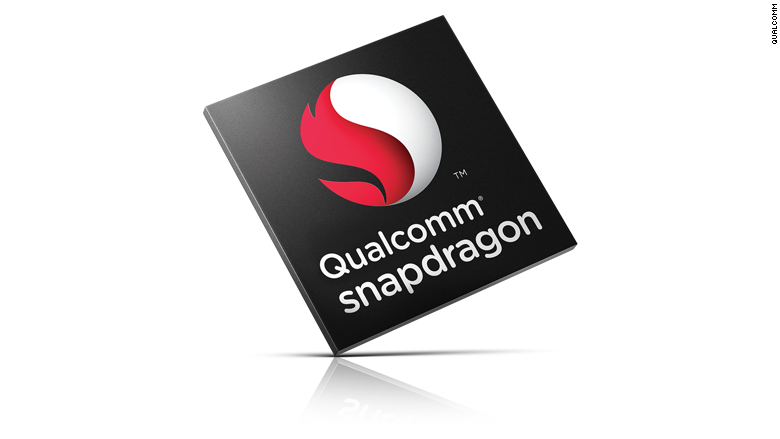If you’re thinking about buying a new smartphone, you might want to wait just a bit. Next year’s smartphones are going to do stuff that would make your current phone jealous.
The next crop of smartphones are going to have faster download and upload speeds. They’ll have 3-D surround sound. Their cameras will work way better in the dark. Their batteries will last longer. And they’re not going to get quite as hot when they’re working hard.
That’s thanks to Qualcomm’s new Snapdragon 820 chip, which the chipmaker unveiled on Tuesday, as well as Qualcomm’s new recently upgraded radio chips. More than half of the world’s smartphones run on Qualcomm processors, including the Samsung Galaxy S phones. Nearly two-thirds use Qualcomm’s radios to connect to Wi-Fi and cellular networks, including Apple’s iPhones.
Here’s a look at what Qualcomm’s (QCOM, Tech30) new chips have to offer:

Faster connections: Next year’s phones will be able to download up to 600 Megabits per second and upload 150 Mbps. That’s twice as fast as today’s smartphones’ top speeds and about 30 times faster than the typical broadband connection that most cable companies offer.
None of the major U.S. carriers offer speeds that come close to 600 Mbps. But they don’t really have to. Carriers broadcast 4G signals across several different wireless frequencies. Qualcomm’s chips can bind three different wireless signals together to make one faster pipe.
Better-sounding calls: Call quality will improve as well. Today’s phones decide whether a call should be made over Wi-Fi or a cellular network based solely on the signal strength of the different networks. But signal strength is just one of several factors that determine the quality of a call.
Next year’s phones will decide whether to make a Wi-Fi or a cellular call based on which network will provide the best-sounding call.
They’ll also maximize your antenna’s efficiency. The way you hold your phone can affect your signal strength, forcing your phone to boost its signal. That taxes your battery more than just about any other feature of your phone. Next year’s phones will be smarter about knowing where your hand is and sending signals around the obstruction.
Clearer photos: Sunsets are virtually impossible to capture well with today’s smartphones. You either get a clear view of the sunset with a dark and blurry foreground or a bright foreground with a fuzzy sunset.
Next year’s phones will be able to capture photos that are closer to what your eye actually sees, by brightening hard-to-see images in dimly lit settings. Many phones have adaptive brightness features, but the digitally brightened images appear fuzzy. The Snapdragon 820 will take out much of that blur effect, giving your next smartphone the ability to take stunning low-light photos.
Louder, immersive sound: Smartphones can only get so loud, because you can blow out their tiny speakers by cranking up their volume.
But next year’s phones will offer louder sound with the same, tiny, speakers. By boosting the lower ranges while still limiting the high ranges, the Snapdragon 820 will yield louder sounds that are still in a safe range for your phone.
They’ll also be able to simulate sound that’s approaching and moving away from you. When wearing headphones, you’ll be able to experience simulated 3-D surround sound on your phone.
Better battery life: Amazingly, you get all that extra power, but the new Snapdragon 820 processor consumes 30% less power than last year’s Snapdragon 810 chip. And it’s more thermally efficient, so your phone won’t burn a hole in your pocket.
As reported by CNN
